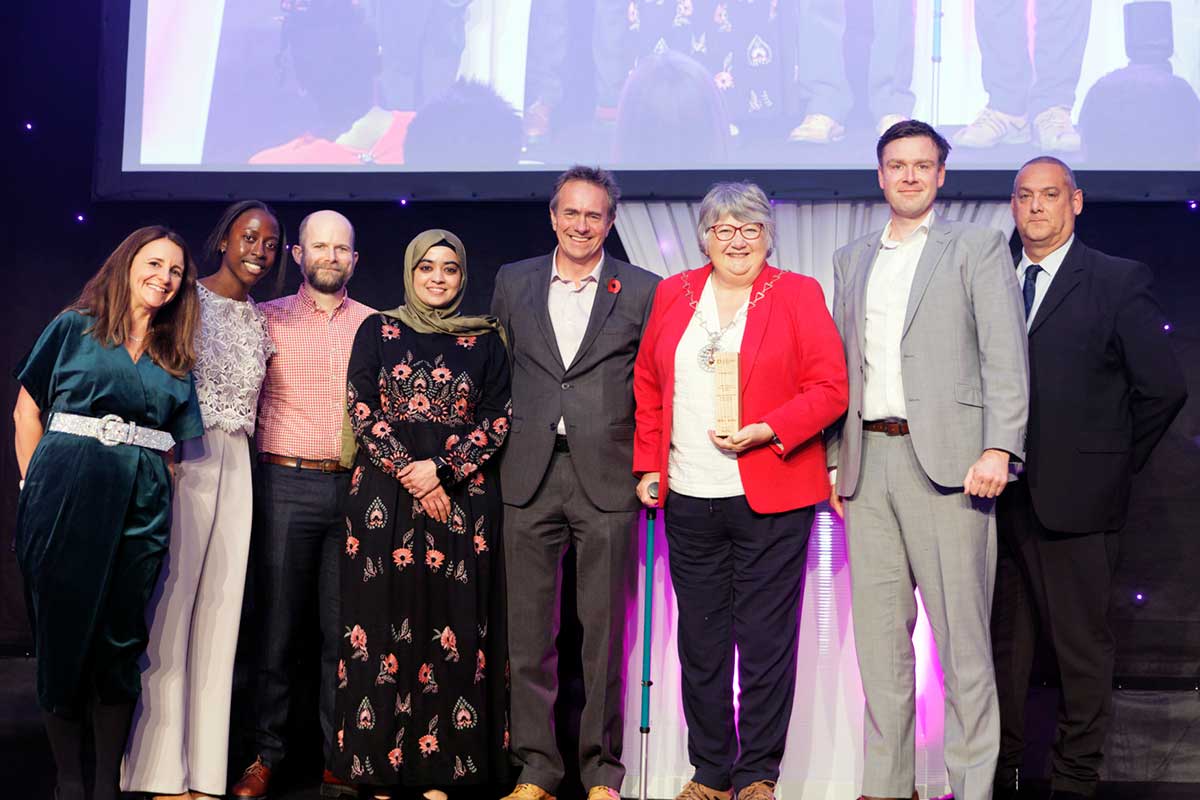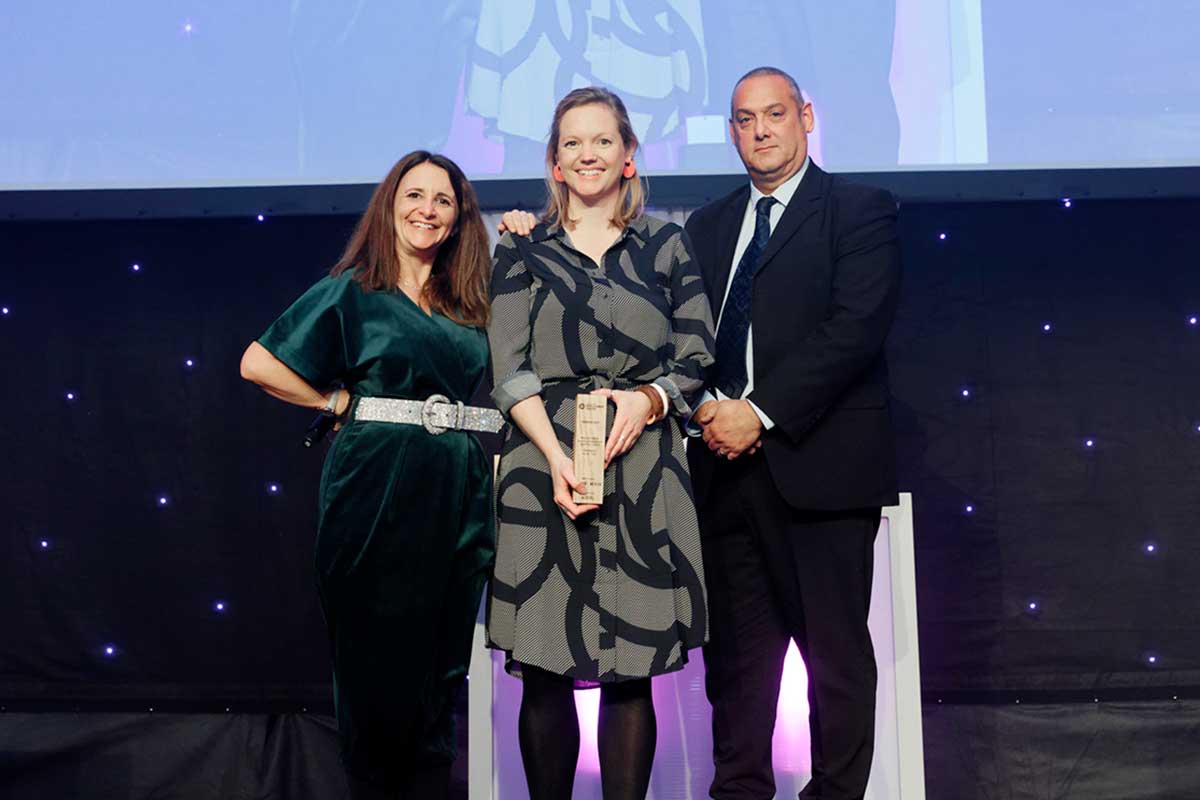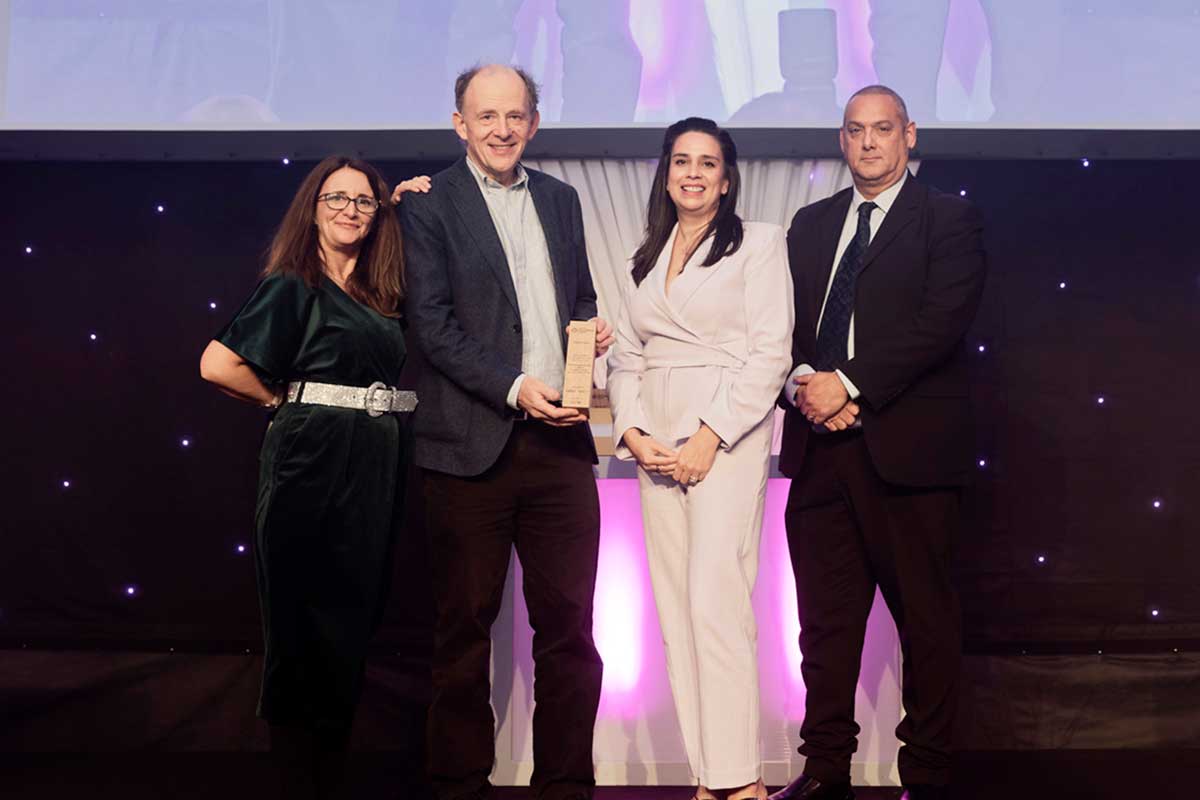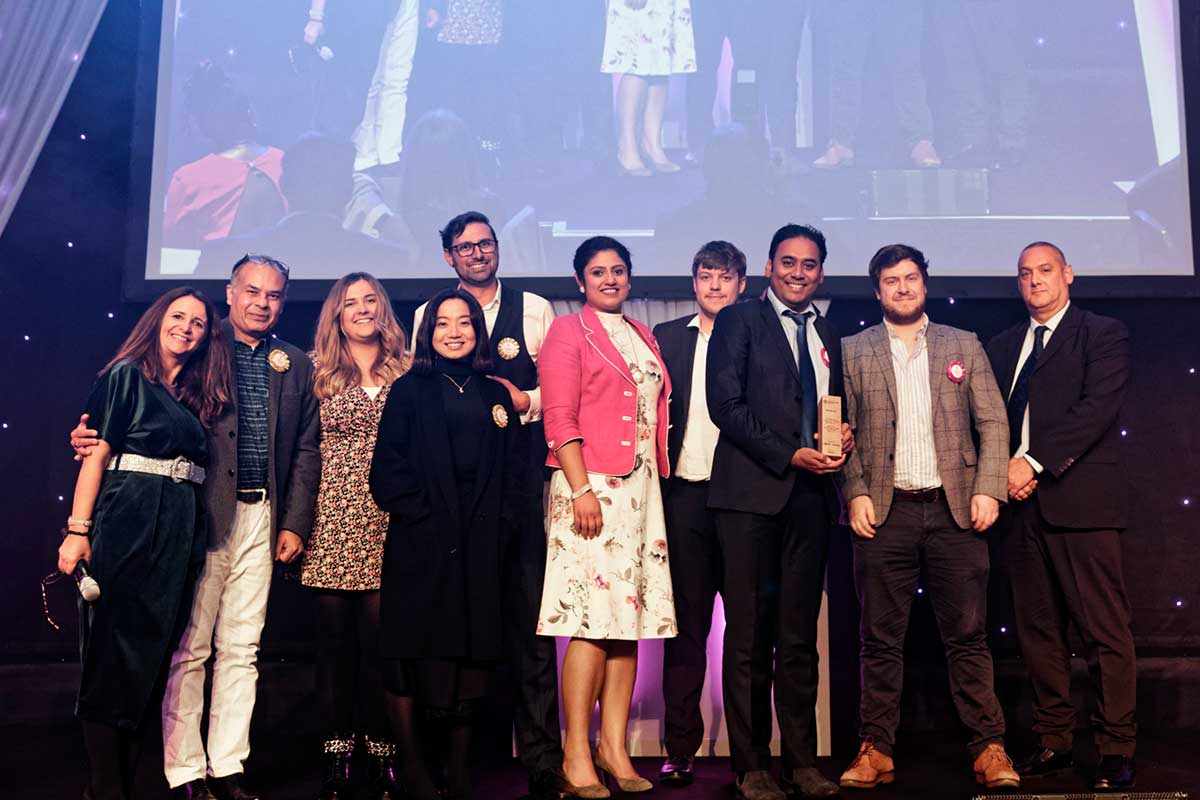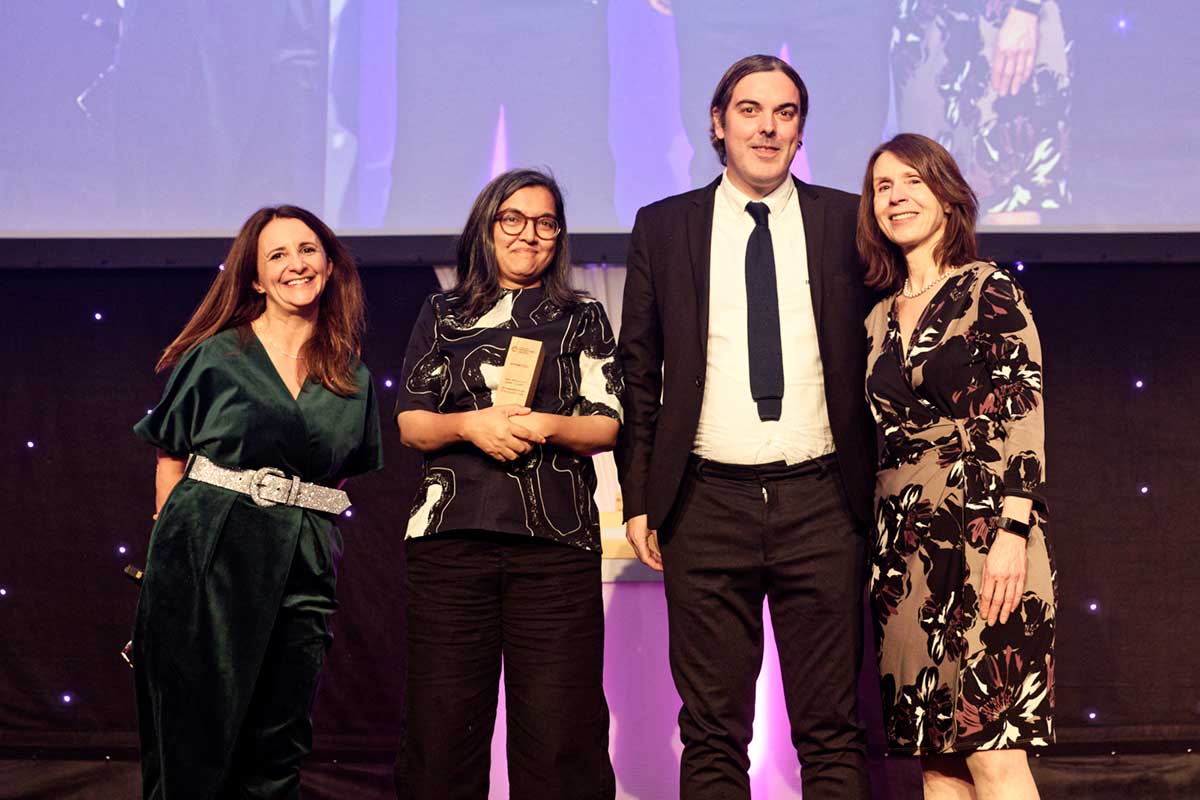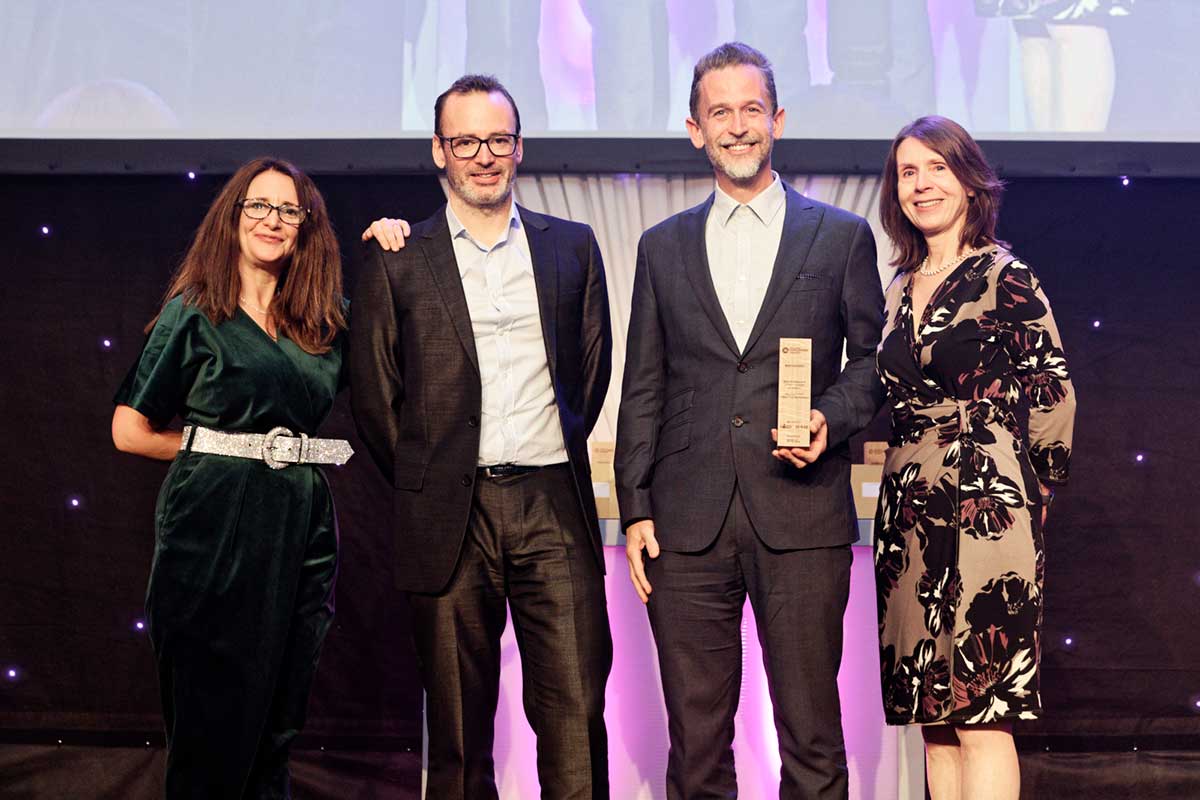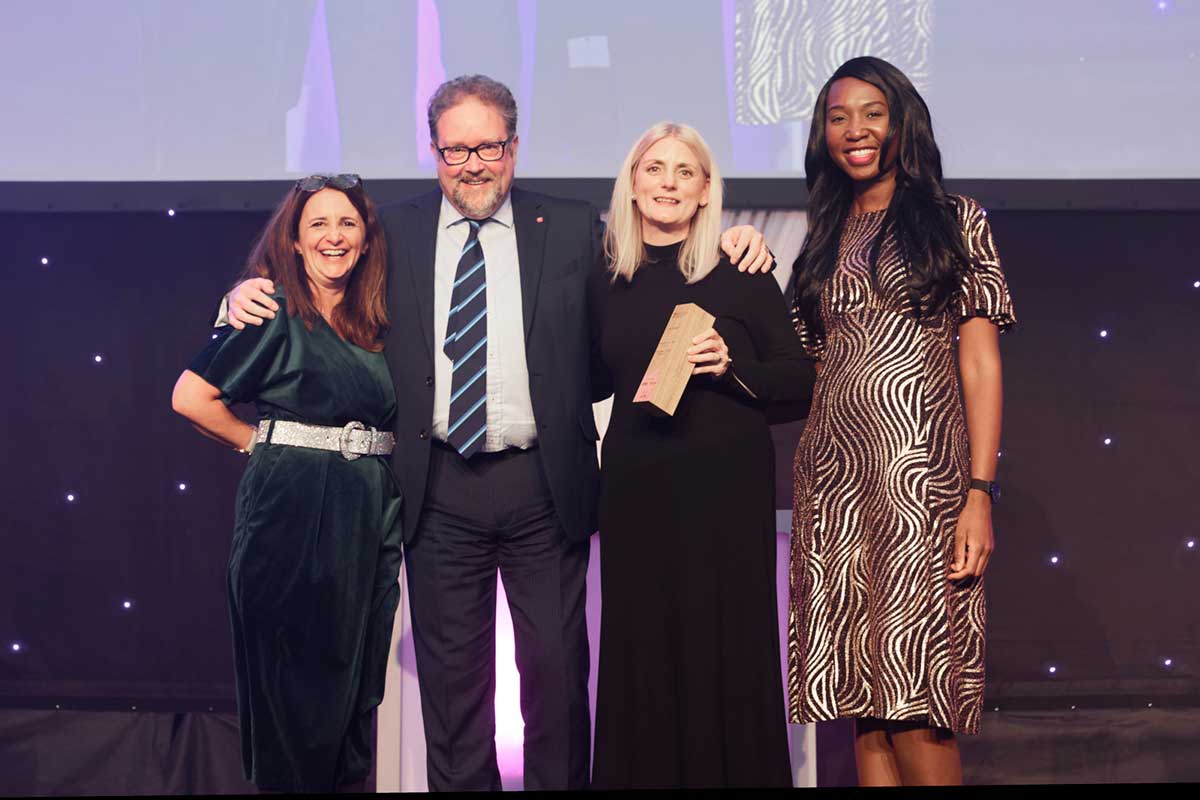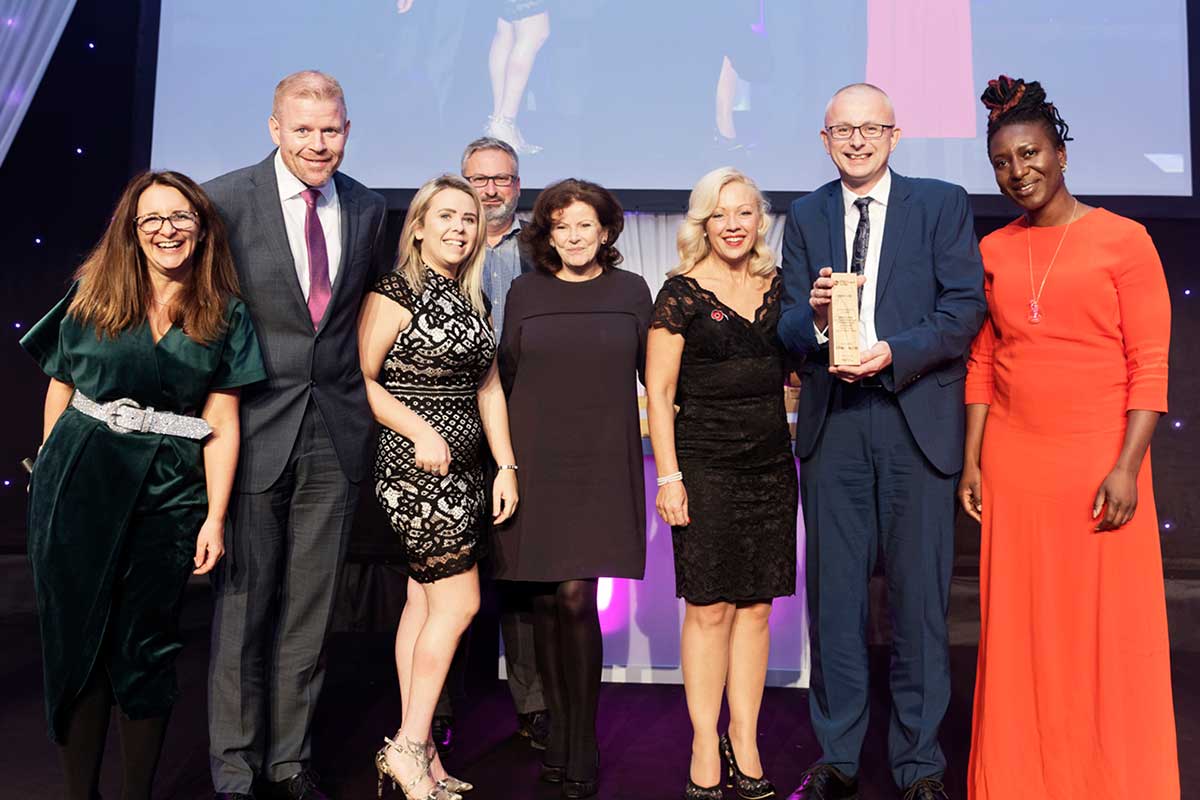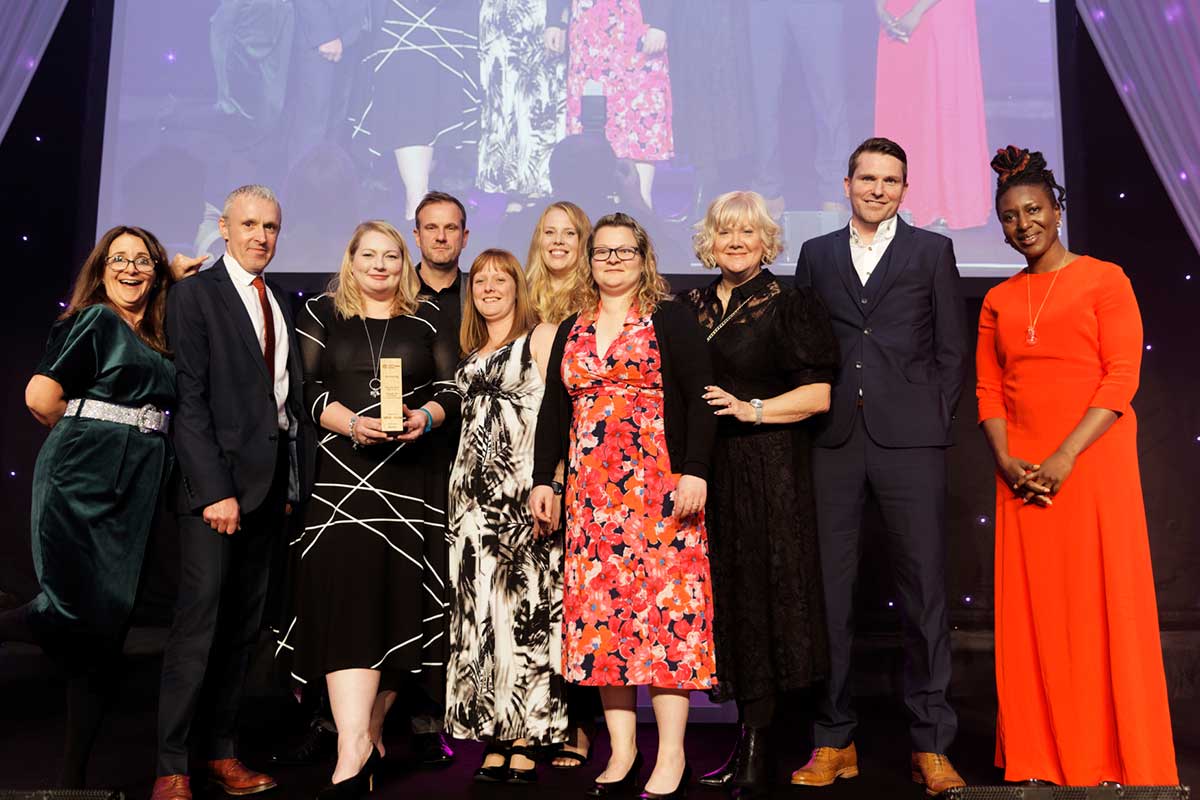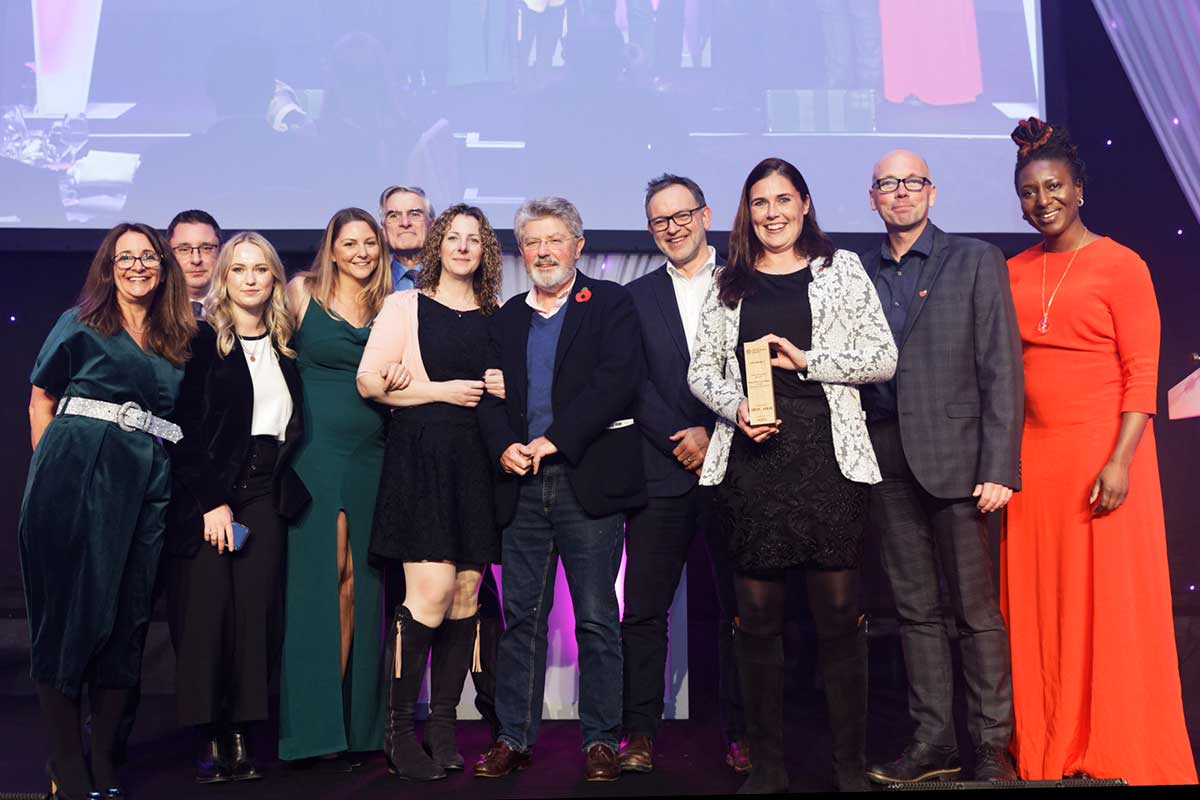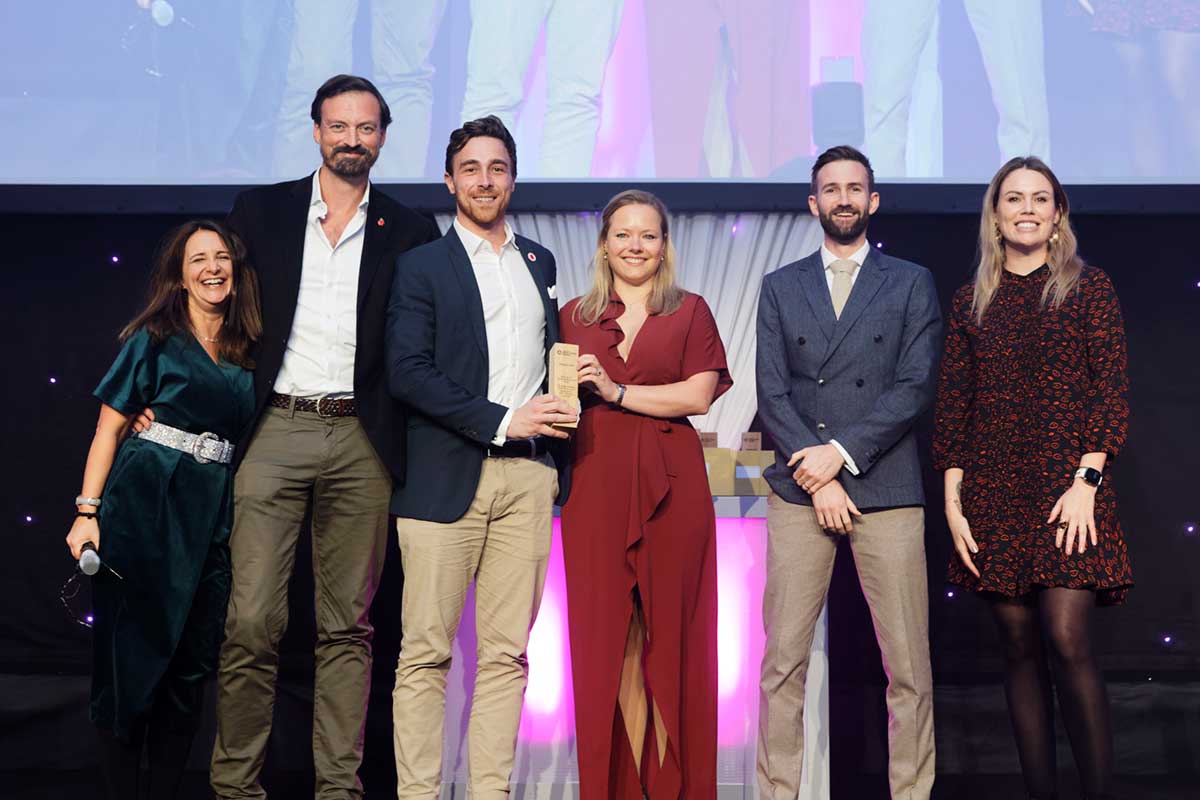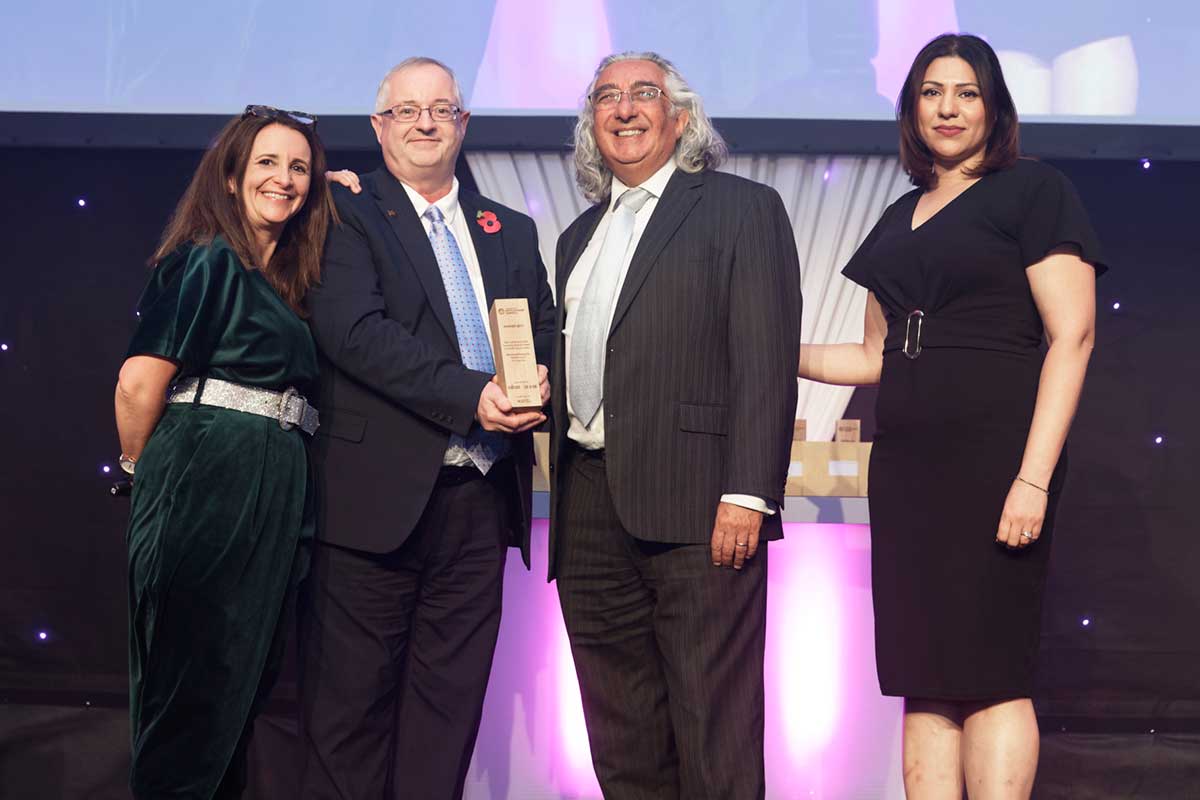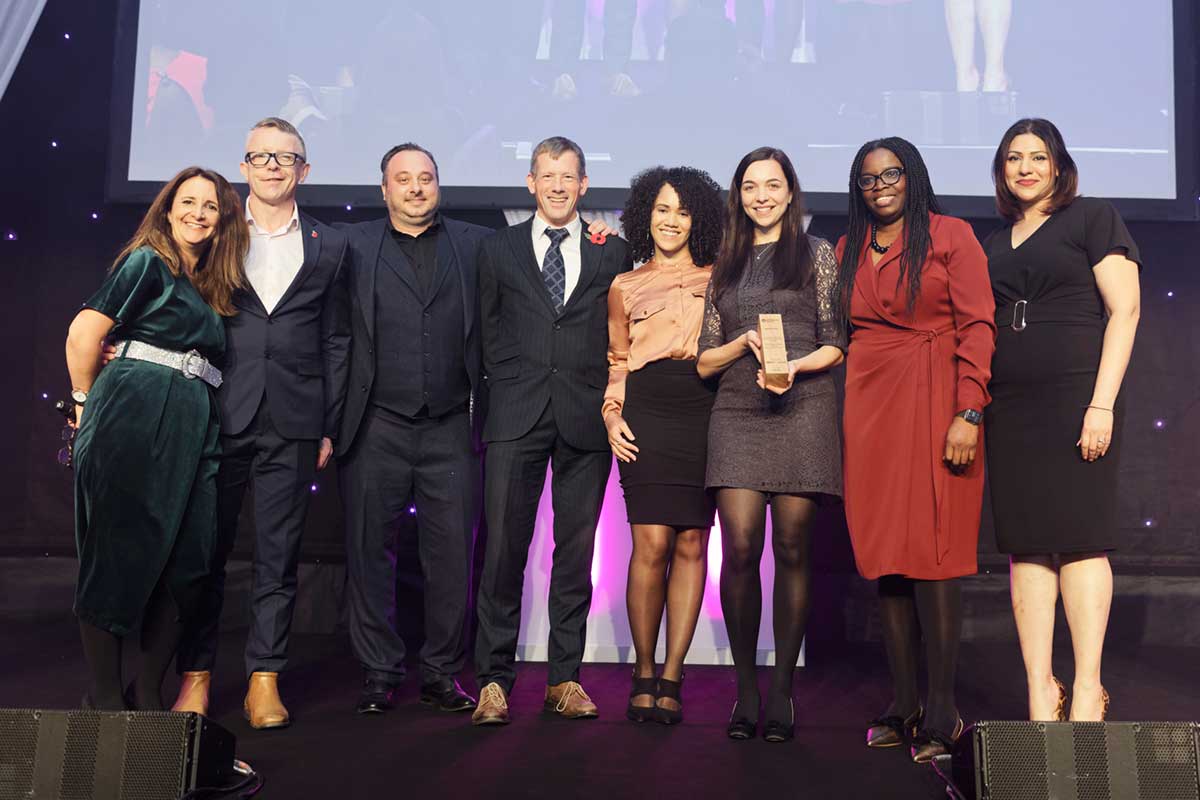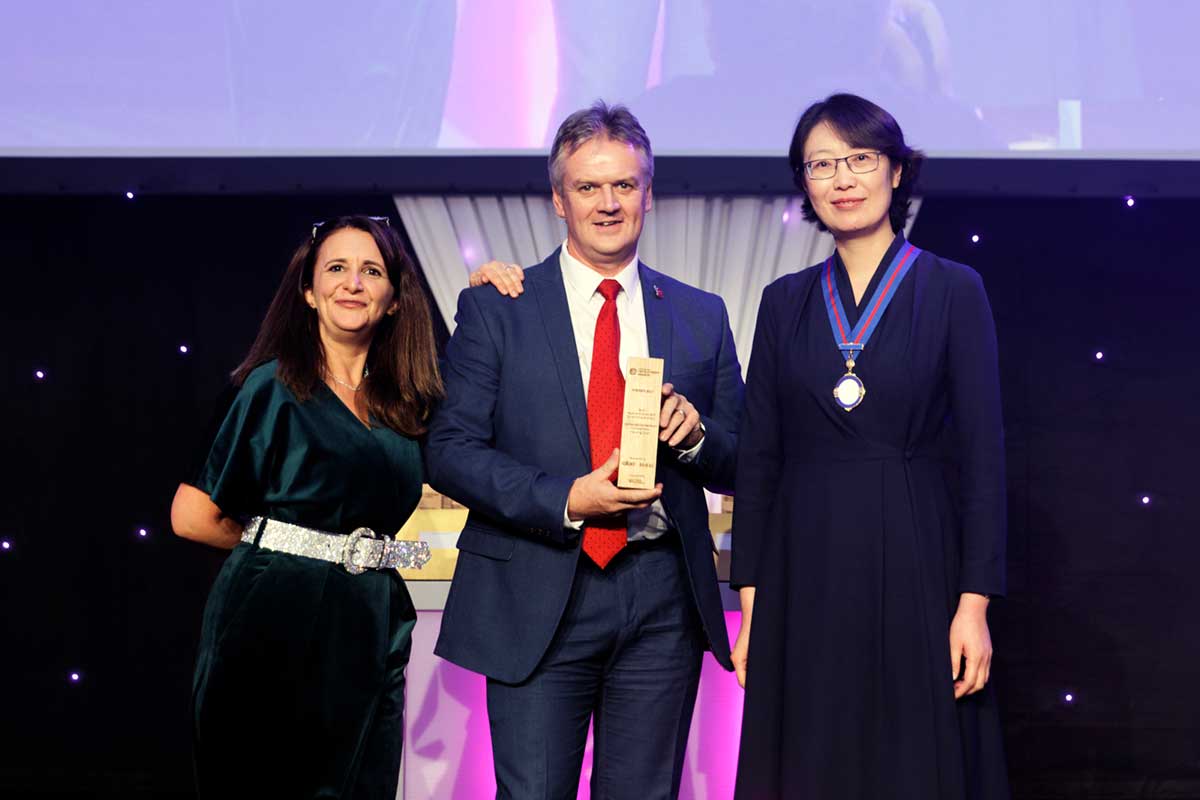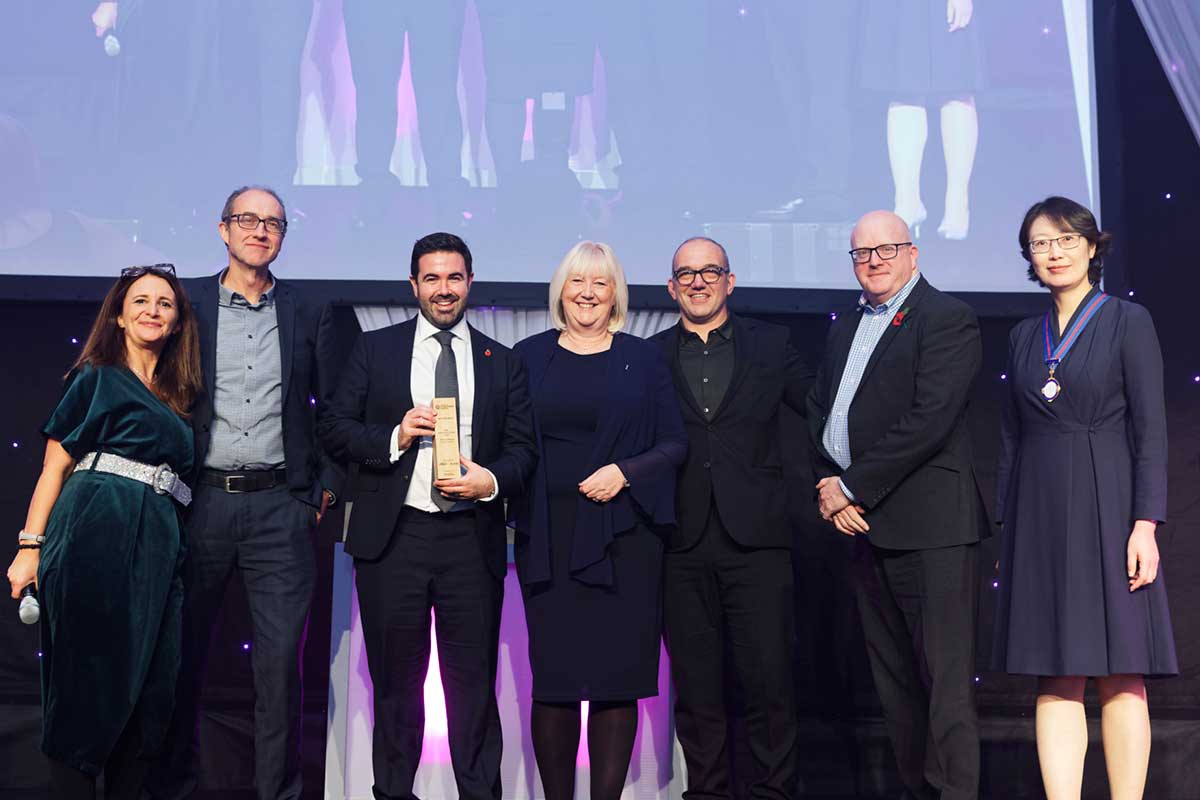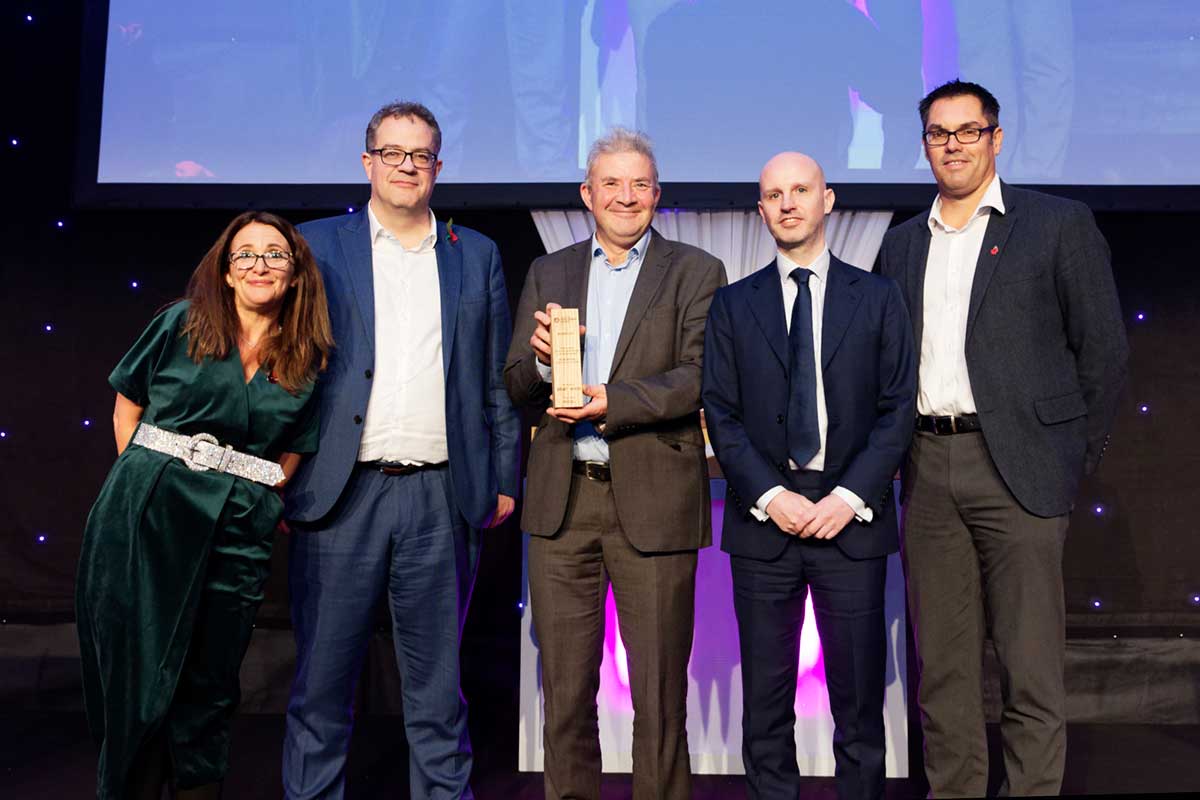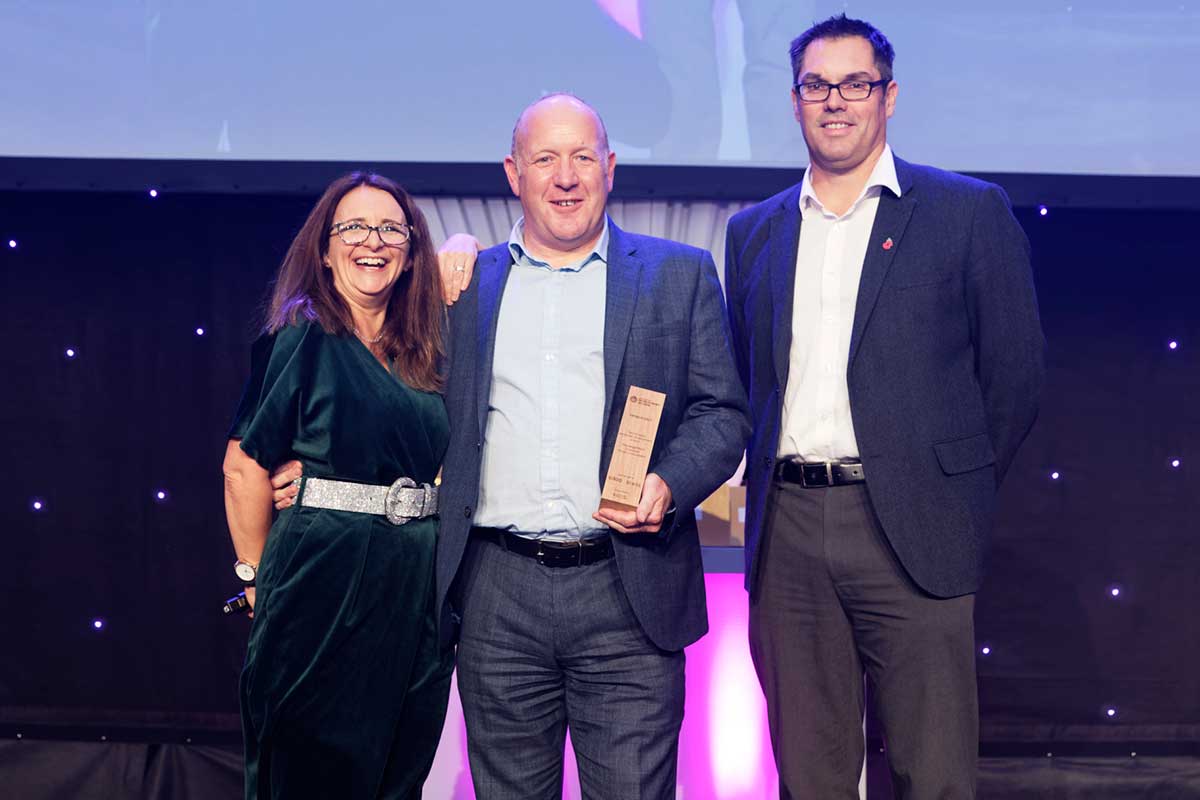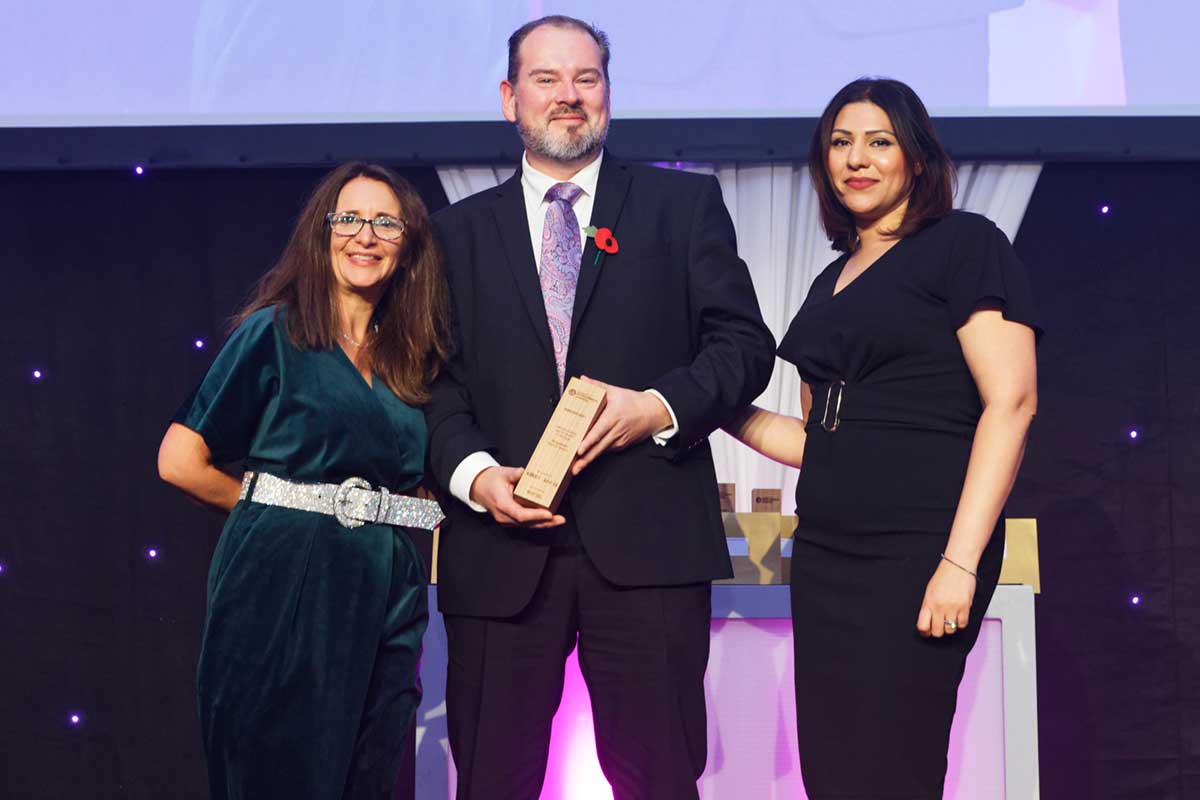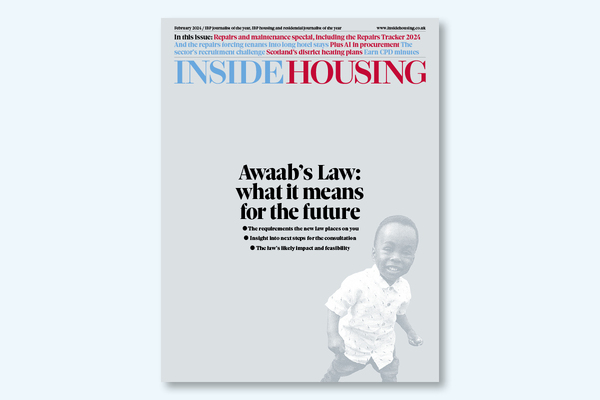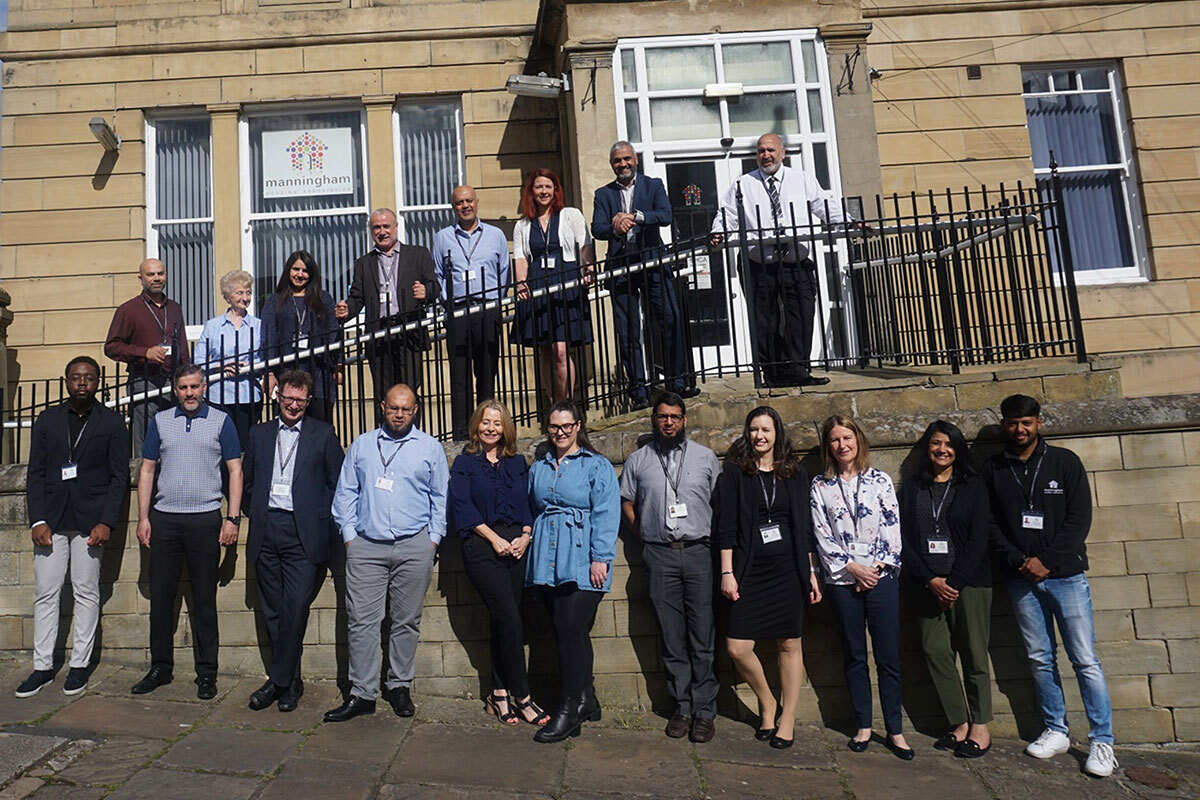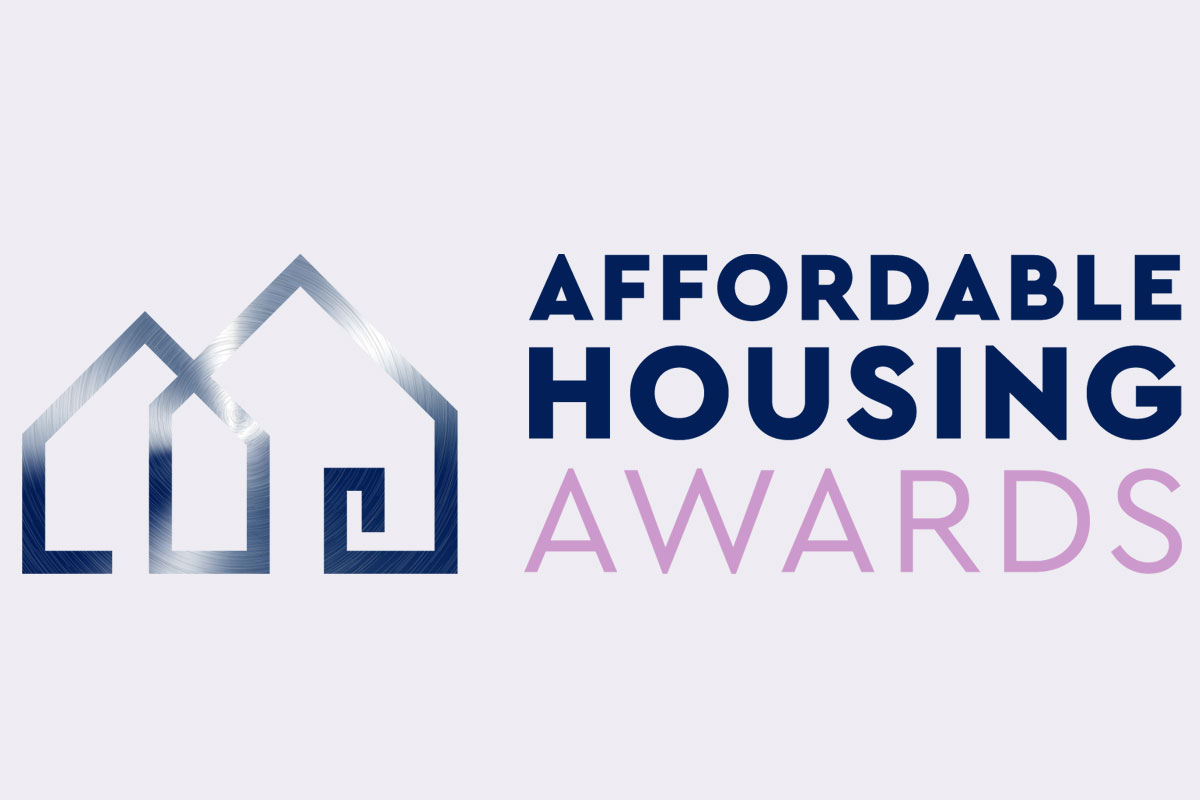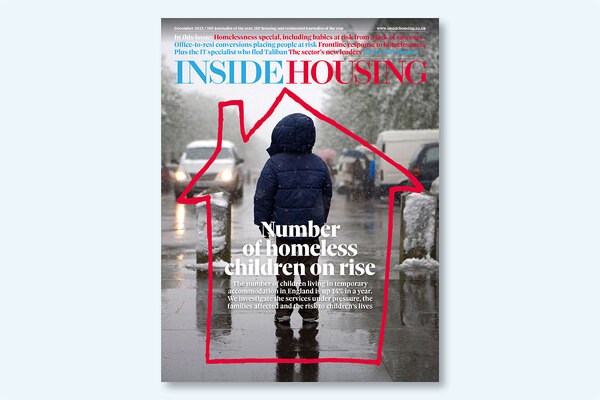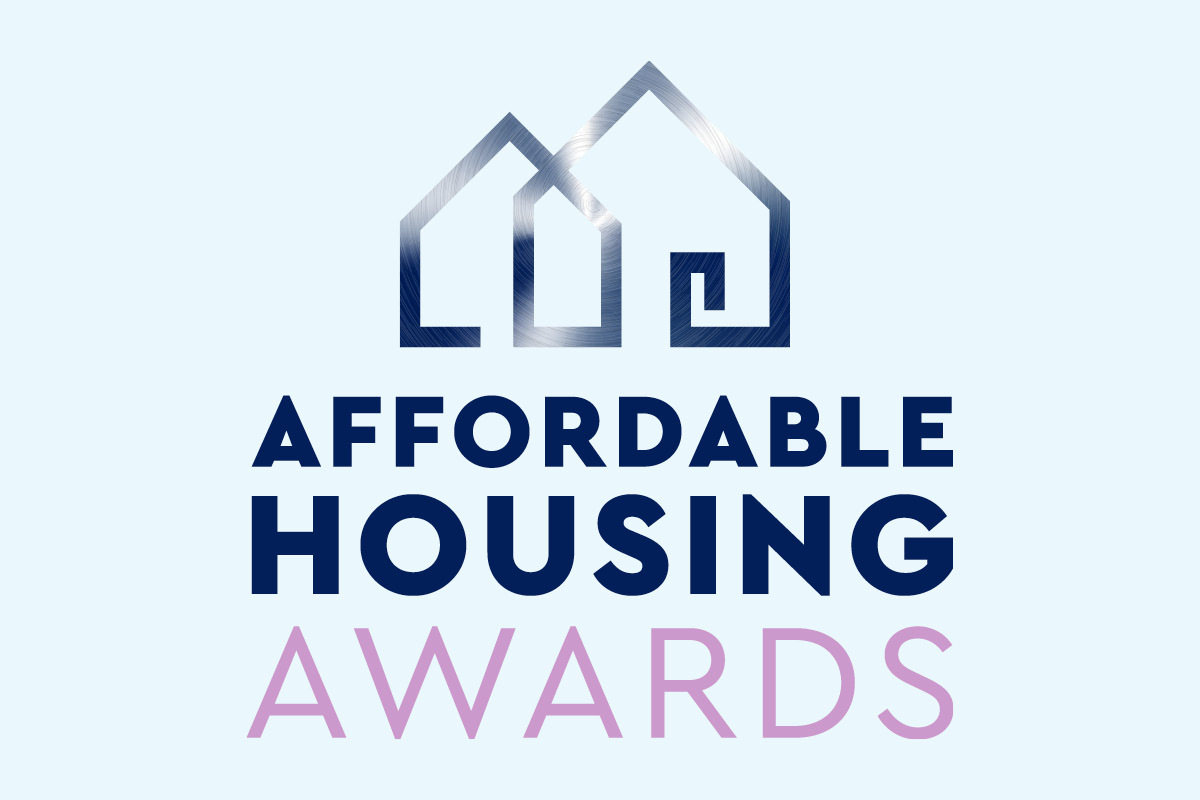You are viewing 1 of your 1 free articles
Inside Housing Development Awards 2021
Inside Housing reveals the winners of this year’s Inside Housing Development Awards. Photography by Jason Alhuwalia
The Inside Housing Development Awards offer an opportunity to celebrate the very best residential developments across the UK from the past two years.
Throughout the challenges of the pandemic, the housing sector has proved its resilience – striving towards more sustainable solutions and undertaking projects that have put the needs of the communities they serve above all else.
Winners were announced at an awards ceremony on 4 November at InterContinental, London.
The awards were judged by an esteemed panel of industry experts.
Each category was judged by our panel, who assessed and scored each online submission to create our shortlists. The judges then attended a judging day where they decided the eventual winners.
Here, we have highlighted the successful teams and individuals, and explain why they won.
A huge congratulations to all our winners.
Welcome to this special section celebrating the sector’s success at the Inside Housing Development Awards.
Here, we’ll be taking a look at the winning schemes that caught the judges’ eyes this year.
The last time we held the awards, in 2019, we were just weeks out from a general election! Meanwhile, the past few years have taught us (or reminded the wider world) of the crucial importance of decent, well-designed and spacious housing.
As The Health Foundation put it last year: “Better housing is crucial for our health and the COVID-19 recovery,” as it called for more investment in social housing. And the COP26 conference over the past month has stressed the importance of looking for solutions on the road to net zero, too.
The awards give us the chance to identify the players delivering interesting solutions to these problems.
A massive thank you to the judges and our sponsors who made the event possible.
Martin Hilditch, editor, Inside Housing
Best affordable housing development (more than £20m)
Kidbrooke Park Road, Royal Borough of Greenwich
- 117 new council homes for Greenwich, all of which are for social rent
- The development includes a nursery, communal garden and public park
- Competes with private development in the area in terms of quality
Kidbrooke Park Road is a development of 117 council homes, all for social rent. It is one of the most ambitious social housing schemes to be built in Greenwich for decades. One-third of the units are family sized, 51% are two-bedroom flats and one in 10 is wheelchair accessible. Every unit has either a garden or a generous balcony, and the design took into account families who may have to work from home. The development also provides a nursery, a communal garden and a public park.
Sustainability has been at the centre of this scheme. The properties use air source heat pumps, mechanical ventilation, solar panels and green and blue roofs to achieve a high standard of net zero carbon development. Facades, along with the orientation of rooms and windows, have been designed to avoid overheating while maximising the amount of sunlight in each property.
This scheme sets an exceptionally high standard. It competes with private developments in terms of energy performance, layout, space standards, cycle parking, amenity provision, play space and architectural quality. It has also regenerated a vacant piece of land.
The judges said:
“Kidbrooke Park Road is an ambitious and high-quality council building. With 100% affordable homes, this well-thought-out project has residents at its heart”
This category was judged by:
Annalie Riches, founder, Mikhail Riches
Vicky Savage, London managing director, L&Q, and G15 development director chair
Highly commended
St Leonard’s Court, Child Graddon Lewis
Best affordable housing development (less than £20m)
The Reach, Pitman Tozer
- A development of 66 affordable rent and shared-ownership homes in south-east London
- The scheme is situated on a brownfield site that has been sensitively developed
- Low-energy homes keep service charges and running costs low for residents
The Reach is a development of 66 affordable homes in Thamesmead, south-east London, on a brownfield site that was once destined to become a McDonald’s.
The properties are a mixture of one, two and three-bedroom flats, seven of which have been designed for wheelchair users; 14 are available at affordable rents for people on the local housing register, while the remaining 52 are shared-ownership flats targeted at local first-time buyers.
The Reach has been sensitively developed with consideration for the context and community. Its three blocks are orientated in a C-shape around a south-facing communal garden and this courtyard, intended to be reminiscent of Georgian and Victorian garden squares, integrates play space, a cycle store and both private and communal amenity space for the residents.
The building as a whole has been designed to provide low-energy homes, keeping service charges and running costs low for residents. The homes are triple-glazed throughout, while a low-energy communal heating system provides space heating and hot water to all residents.
The judges said:
“This scheme stood out for its affordability and impressive sustainability credentials. It includes generous community facilities and all flats are dual aspect with balconies”
This category was judged by:
Annalie Riches, founder, Mikhail Riches
Vicky Savage, London managing director, L&Q and G15 development director chair
Best affordable housing development (less than £10m)
The Gannochy Estate, Anderson Bell Christie
- Forty-eight new two-bedroom homes have been added to Perth’s historic Gannochy Estate
- The homes can accommodate a range of tenants, from young families to older people
- They have been designed with sustainability, community and the local context in mind
The Gannochy Estate in Perth was built in 1923; the Gannochy Trust, which oversees the estate, was founded in 1937. To celebrate its 75th anniversary, the trustees decided to extend the estate by 48 sustainable, two-bedroom homes to accommodate a range of tenants – young families, single people, older people who are downsizing and people with physical and perceptual impairments (such as dementia), including those with a live-in carer.
The Gannochy Estate has a distinctive character. It was extremely important that the new development retained the design ideas behind the original model village. The original homes were orientated on a south-west grid – an early use of solar gain – so new homes are orientated similarly. This provides a physical framework which helps residents in new housing to feel as if they are part of an established community.
Community gardens and outdoor spaces make it easy for residents to spend time outside. The new homes are highly energy efficient, maximising affordability by minimising fuel bills. An innovative passive, natural ventilation system ensures good indoor air quality.
The judges said:
A thoughtful new development in an existing estate of historic significance. The design is flexible to meet the needs of future as well as present residents”
This category was judged by:
Adunni Adams, head of development delivery, Catalyst
David Orr, associate director for housing, Centre for Ageing Better
Highly commended
William Cuffay House, London Borough of Southwark
Sponsored by:

Best affordable housing development (less than £5m)
ZED Pods and Bromley Council partnership
- A 25-home social rent scheme built over a council-owned car park
- The ultra-low energy units are 90% manufactured offsite
- This process has benefited the community as well as the scheme itself
Bromley Council has been seeking to boost affordable housing supply on council-owned sites to address a local need for permanent accommodation.
ZED Pods is working with Bromley Council to erect an affordable, net zero carbon housing development in a public car park. This scheme – due for completion this autumn – is an environmental and socially focused development of 25 social rent homes aimed at reducing the number of people in temporary accommodation. The homes are erected on stilts to preserve the utility of the parking spaces underneath, in what is the first development of its kind in London. This would not be possible using a traditional construction approach, but because these pods are built on top of a steel podium, the council can still use the land beneath it.
The homes are ultra-low energy, and their construction is up to 90% completed in a UK-based offsite factory before the modules are transported to the site. They can be installed at the site within days, with very little local disruption, noise, pollution, waste or movement of construction vehicles, showcasing an exemplar sustainable construction process.
The judges said:
“Good imaginative use of site and a great approach to MMC and zero carbon. Modular offsite construction demonstrated benefits to the community [and] development programme”
This category was judged by:
Adunni Adams, head of development delivery, Catalyst
David Orr, associate director for housing, Centre for Ageing Better
Highly commended
Helenvale, The Blackwood House, Blackwood Homes and Care
Best development (suburban and rural)
Blackfriars, Rother District Council
- A sustainable solution to what has been a difficult site to develop
- Low-carbon, future-proofed homes on a historic and topographically challenging site
- Green and open outdoor spaces encourage community spirit as
well as biodiversity
Blackfriars is a highly sustainable, contemporary development of 200 homes – 42 affordable rent and 28 shared-ownership properties. It is future-proofed for the transition to zero carbon, while respecting the local heritage and landscape of Battle, a historic town within the High Weald Area of Outstanding Natural Beauty. This scheme has been developed with sustainability and well-being at its heart, while balancing environmental factors.
This scheme features three thermal mass, earth-sheltered properties, making use of the site’s steeply sloping topography, turning a constraint into an opportunity. Passivhaus units have been proposed at both entrances to the site, acting as a gateway and showcasing the high-quality design intent of this development.
The design responds to the ecological and topographic constraints of the site, creating three distinct areas. Green and open community space will encourage social interaction and promote biodiversity across the site. All new homes have been designed to significantly reduce energy consumption and carbon emissions, while minimising energy costs for residents.
The judges said:
“A visionary local authority with ambition, addressing key issues of sustainability... We were all bowled over. A sensitive neighbour to a sensitive natural environment”
This category was judged by:
Charlotte Johnson, national account manager – residential, Willmott Dixon
Sue Riddlestone, founder, Bioregional
Andy von Bradsky, founder, vBE, and former head of architecture, Ministry of Housing, Communities and Local Government (now the Department for Levelling Up, Housing and Communities)
Best development (urban – London)
St Leonard’s Court, Child Graddon Lewis
- A sympathetic 71-home development in the heart of Hackney
- Design fits in with surrounding streets, with traditional street frontage
- Tenure-blind design with no distinction between private and affordable homes
Completed in the summer of 2020, this transformational 71-home development – 32% of it affordable – replaced dilapidated post-war housing blocks no longer fit for purpose, creating a distinctive contemporary addition to Hackney’s townscape.
The scheme is designed to be tenure-blind to ensure no visual distinction between the private and affordable properties. It has also reinstated housing aligned with the surrounding streets, with front doors and gardens providing additional security – creating a tangible sense of community with a traditional street frontage.
Teamwork and stakeholder collaboration at the design stage paid dividends; an extensive consultation programme ensured the local community and existing residents connected with the scheme. The design gained strong support from all review panels and Historic England, each praising the design approach. The use of modern methods of construction enabled significant reductions in both waste and cost, while each home meets the Code for Sustainable Homes level 4.
St Leonard’s Court has successfully created a mixed-tenure, thriving urban community intrinsically centred on well-being and health.
The judges said:
“Exemplary design with a clear strategy, integrating landscape, health and well-being. Aesthetically pleasing and designed to align with three different street scenes”
This category was judged by:
Charlotte Johnson, national account manager – residential, Willmott Dixon
Sue Riddlestone, founder, Bioregional
Andy von Bradsky, founder, vBE, and former head of architecture, Ministry of Housing, Communities and Local Government (now the Department for Levelling Up, Housing and Communities)
Highly commended
Ebury Bridge, Westminster City Council
Best development (urban – outside of London)
City Park West, Pollard Thomas Edwards
- A new, 645-home, mixed-tenure development in the heart of Chelmsford
- This car-free neighbourhood is complemented by cafes, workplaces and public art
- Includes a mix of market rent, shared ownership, social rent and affordable extra-care housing
City Park West is a mixed-use, 645-home neighbourhood in Chelmsford, of which 60% is for market rent, 20% shared ownership and 10% social housing. The remainder provides affordable extra care. The scheme, designed by architect Pollard Thomas Edwards, features cafes, restaurants, workplaces, community facilities and public art. It is made up of five new residential buildings, including a 14-storey tower, four new public squares and three refurbished buildings, one listed.
The brief from Notting Hill Genesis called for a high-density residential development with a range of house types. It wanted to encourage families, first-time buyers and older citizens, including those with extra-care needs, to live in the centre of Chelmsford. It provides a range of home types and tenures, from one-bedroom extra-care flats to three-bedroom mews homes with their own front doors and rooftop terraces. All were designed with generous storage, flexibility and future adaptation in mind. Homes have been built to high environmental standards, with lower emissions and reduced water consumption.
City Park West is unashamedly urban in scale and character, yet the lasting memory is of a place designed with people in mind.
The judges said:
“An excellent town centre scheme... A sensitive relationship to existing urban fabric. Designed well with a rich mix of tenures and types for all age groups and well-designed public spaces”
This category was judged by:
Charlotte Johnson, national account manager – residential, Willmott Dixon
Sue Riddlestone, founder, Bioregional
Andy von Bradsky, founder, vBE, and former head of architecture, Ministry of Housing, Communities and Local Government (now the Department for Levelling Up, Housing and Communities)
Highly commended
Othello Way flood-resilient housing, Baca Architects
Best development team (London)
New homes development team, London Borough of Southwark
- This team oversees the UK’s most ambitious council house building programme
- It has ambitious development targets, but always puts residents first
- A collaborative and innovative team with much to be proud of
Southwark Council’s new homes development team is committed to the most ambitious council house building programme in Britain, as well as one of the largest rooftop development programmes in the country. Since 1 May 2019, they have secured planning permission for 659 new homes and started construction on 397, and delivered 175 completed new homes over 18 schemes. This ambitious and hard-working team puts residents at the heart of what they do, working closely with local people to shape the way they deliver new homes, from site identification through to consultation, design, planning and delivery.
Despite these ambitious targets, this team has always prioritised the needs of existing residents. As such, the team has not always maximised the development potential of sites, but instead invested in forging close working relationships with residents and key stakeholders.
An egalitarian team spirit means members collaborate without the input of their managers, generating solutions and ideas which are shared for the benefit of everyone. This innovative team is on track to meet its development targets, while keeping residents at the heart of what it does.
The judges said:
“Very authentically focused on local residents and consultation... Great initiatives, innovation and resourcing to continue to do so during lockdown”
This category was judged by:
Yemi Aladerun, architect and major projects manager, Islington and Shoreditch Housing Association
Caroline Pillay, founder, Councils Building Homes
Lynn Wassell, chief executive, Clyde Valley Housing Association
Best development team (rest of UK)
Affordable development team, Gentoo
- This team of 11 was recruited from scratch during the pandemic
- It has already designed a 940-home development programme
- A young and talented team that has shown impressive results in its first year
Just over one year ago, this team didn’t exist, and Gentoo’s affordable homes programme was merely a vision written on board paper. Fast forward one year and that vision is now a reality.
Gentoo is addressing the affordable housing shortage in Sunderland at speed. It has designed a 940-home programme, recruited a new team, has 100 homes on site, consulted on plans for 324 homes and has 170 homes with planning approval. All of this has been achieved in just over 12 months, during a global pandemic, without the team being able to meet in person.
In that time, the group has recruited some of the best talent in the industry, from across the UK, to create a team of 11 colleagues from eight different organisations, with an average age of 35.
The team quickly created its own identity, and equally as important, created a new identity of affordable housing for Gentoo. The team has developed a range of 14 house types in line with the national design guide, ensuring it is not only delivering new homes of exceptionally high quality, but also creating inclusive communities in Sunderland that tenants will be proud to call home.
The judges said:
“A young and talented team, recruited during the pandemic. Now has a 940-home programme designed and secured for 2024 to deliver from scratch; impressive scale and speed”
This category was judged by:
Yemi Aladerun, architect and major projects manager, Islington and Shoreditch Housing Association
Caroline Pillay, founder, Councils Building Homes
Lynn Wassell, chief executive, Clyde Valley Housing Association
Best development team (South)
Cambridge Investment Partnership
- An excellent example of partnership working and delivery
- This team has made impressive progress in its first four years
- Now working to deliver 1,000 affordable new homes within 10 years
Cambridge Investment Partnership (CIP) is an equal partnership between Cambridge City Council and Hill. It was established in 2017 to address acute housing need and provide financial returns by providing new, high-quality council homes, market sale homes and commercial and community facilities.
A joint-equity model was set up, with each partner funding 20% of the costs and the remaining 60% met by bank finance. Four years on, CIP has a joint investment team, a shared office, and actively supports skills transfer between the public and private sector sides of the programme.
A year ahead of target, CIP has achieved planning for over 500 new council homes, completed seven sites under COVID-19 guidelines and is working to deliver a minimum of 1,700 new homes, with 1,000 being affordable, within 10 years, including the first Passivhaus-accredited council homes in Cambridge.
CIP has a mixed portfolio, from large city centre brownfield sites, to estate regeneration projects and infill schemes that use under-utilised parcels of council land to provide affordable homes. Its winning formula is all about collaboration.
The judges said:
“A partnership created through an equity investment model that has achieved an ambitious range of projects and innovation. An excellent example of partnership building”
This category was judged by:
Yemi Aladerun, architect and major projects manager, Islington and Shoreditch Housing Association
Caroline Pillay, founder, Councils Building Homes
Lynn Wassell, chief executive, Clyde Valley Housing Association
Best partnership (London)
Mears Living and London Borough of Waltham Forest
- This scheme provides housing for homeless individuals and families
- It was made possible by using an innovative financing approach
- This scheme purchased and refurbished 365 homes for homeless people
More Homes Waltham Forest is an innovative partnership that leverages new funding streams to solve the problem of expensive and inadequate temporary and emergency accommodation in this London borough.
This purchase-and-repair scheme has raised £88m through privately placed bonds to purchase and refurbish 365 homes for homeless individuals and families. The scheme lasts for 40 years, after which the homes will revert to the ownership of the council, providing a sustainable source of housing and long-term security to households in need.
In Waltham Forest, more than £3.4m is spent every year housing around 2,300 families in bed-and-breakfast, hostel and other forms of temporary accommodation. More Homes significantly reduces costs to the council while allowing it to discharge its housing duty. The result is a win-win, with better homes and outcomes for families for less expenditure.
It demonstrates how local authorities can work successfully with partners like Mears to solve housing challenges in their communities – and how thinking differently can improve outcomes for vulnerable individuals and families.
The judges said:
“A good example of local authority and private sector partnership supporting longer-term accommodation instead of temporary, using innovative financing and cost savings”
This category was judged by:
Kath Palmer, chief executive, Cadwyn Housing Association
Jahanara Rajkoomar, director of community investment, Metropolitan Thames Valley
Best partnership (rest of UK)
Cordage View, North East Lincolnshire Council
- A great example of partnership working to deliver supported housing
- The partners were able to pool diverse knowledge and expertise
- Delivered a much-needed scheme on a tricky brownfield site
This was an ambitious project with no template to follow. The council pulled together a diverse new partnership from the North East Lincolnshire (NEL) Council and NEL Clinical Commissioning Group Union, the private sector, NHS and charitable organisations, working together to meet specific targets. The partnership faced challenges with the design, viability and build of the scheme.
A small, prominent brownfield site in central Grimsby, on the edge of an area of deprivation, was in need of renovation. All partners provided input and pooled their expertise. Each organisation brought something different to the table, from expertise in building management and infrastructure, to construction, health and adult social care knowledge and expertise in specialist adaptations and technology. The value of the partnership made this scheme achievable and impressive. It resulted in the development of 15 one-bed flats adapted for people with physical and learning disabilities.
The partners pooled their knowledge and provided support to overcome challenges. There were many lessons learned, providing a sound basis for future developments.
The judges said:
“A good example of a supported living scheme and partnership working with the NHS, private sector and social housing... this model could be replicated elsewhere”
This category was judged by:
Kath Palmer, chief executive, Cadwyn Housing Association
Jahanara Rajkoomar, director of community investment, Metropolitan Thames Valley
Best partnership (South)
Peek Close, Hastoe Housing Association
- The first community land trust to deliver new homes in Suffolk
- A scheme of much-needed affordable homes for priced-out locals
- The community land trust model means they will remain affordable in perpetuity
Lavenham Community Land Trust (CLT) and rural specialist housing association Hastoe worked closely with local partners to transform a disused maintenance depot into 18 affordable homes in the village of Lavenham, Suffolk. With soaring house prices pushing many out of the area, the partnership was formed with the sole purpose of providing new homes prioritised for local people and kept affordable in perpetuity.
Hastoe brought experience and expertise in sustainable rural housing to the partnership, while Lavenham CLT was the driving force behind the development. It is the first CLT to deliver new homes in Suffolk. Extensive engagement with the local community by Lavenham Parish Council in 2016, alongside a housing needs survey conducted by Community Action Suffolk, revealed a desperate need for more affordable housing in the area – particularly for people who grew up in the village and continued to work or have family there.
Fearing soaring property prices and a wave of second-home owners, local leaders created the CLT. This partnership has transformed a disused brownfield site into an affordable and high-quality housing development.
The judges said:
“A good example of partnership working... using the [CLT] model with a registered provider and council to deliver rural homes for people priced out of the market”
This category was judged by:
Kath Palmer, chief executive, Cadwyn Housing Association
Jahanara Rajkoomar, director of community investment, Metropolitan Thames Valley
Best healthy homes development (rural and suburban)
The Gannochy Estate, Anderson Bell Christie
- Built with the outdoors and social interaction firmly in mind
- ‘Sitooteries’ – outdoor seating areas – are already well used by residents
- Each home has been built to maximise daylight and fresh air
The benefits of being outside for health and well-being are considerable and well known. The new homes at this Perth estate are orientated to the south-west and have large windows to ensure daylight is maximised. A ‘sitooterie’ has been integrated into the layout of all houses, with direct access from each living room. The roof provides cover so that it is possible to sit outside in less-favourable weather – a big factor in Scotland.
Within weeks of project completion, these sitooteries were well used. They encourage residents to sit outside in a comfortable space that allows observation as people pass by, encouraging neighbours to talk to each other. Social isolation for older people is a huge problem and being outside offers the chance of informal contact with others.
There is a lot going on under the skin of these new healthy homes, too. Each has a ventilation system that will ensure good indoor air quality, and this is being monitored over a two-year period. Every home also has its own front and back gardens, and central community space in the development provides visual and physical links to Gannochy Green and the neighbouring meadow.
The judges said:
“A unique scheme... to encourage outdoor living. The focus and emphasis on health and impact of the environment on all aspects of well-being and quality living is well evidenced”
This category was judged by:
Yemi Aladerun, architect and major projects manager, Islington and Shoreditch Housing Association
Caroline Pillay, founder, Councils Building Homes
Lynn Wassell, chief executive, Clyde Valley Housing Association
Supported by:

Best healthy homes development (urban)
The Italian Building, FORE Partnership, Mason & Fifth, Stiff + Trevillion, and Ekkist
- A co-living space in Bermondsey with healthy living at its heart
- Daylight, greenery and natural materials combine to boost health and happiness
- An exemplary and meticulously thought through refurbishment scheme
The Italian Building – a co-living scheme of 23 units in the heart of Bermondsey – is centred around healthy design and human connection. Through biophilic design (design that increases occupants’ connection to the natural environment), an abundance of daylight, meticulous space planning, the use of natural materials and air, water and thermal monitoring, every design and operational detail of this building is focused around the health and happiness of its residents.
It represents a step-change for what a home should be. Although in a bustling part of London, the building’s architectural and interior design places interaction with people and nature at its heart.
Biophilic design is demonstrated through extensive planting both inside and outside, as well as the use of natural, non-toxic materials known for lowering stress and improving air quality. Plants permeate all areas, surrounding tenants with greenery.
Locally produced artwork and nature photography adorn the walls of the corridors and staircases to encourage movement and interaction through aesthetically pleasing circulation networks.
The judges said:
“An exemplary scheme, carefully thought through to improve health and well-being. With refurbishment projects often overlooked... it’s fantastic to see a high-quality submission”
This category was judged by:
Yemi Aladerun, architect and major projects manager, Islington and Shoreditch Housing Association
Caroline Pillay, founder, Councils Building Homes
Lynn Wassell, chief executive, Clyde Valley Housing Association
Supported by:
![]()
Best older people’s housing development (rural and suburban)
Winwood Heights, Halsall Lloyd Partnership
- A new 220-home complete retirement village in Nottingham
- A warm, welcoming and safe environment for independent older residents
- Extra-care and on-hand support ensure residents are looked after as their needs change
Winwood Heights is a complete retirement village in Woodthorpe Grange Park, north of Nottingham city centre. The development has a warm, welcoming and contemporary feel and has created much-needed affordable, quality homes for older residents to rent.
Containing over 220 one and two-bedroom flats in three interconnected new or fully refurbished courts (one new build mid-rise and two existing high-rise tower blocks), the development offers unparalleled views over the parkland setting and Nottinghamshire. All homes are energy efficient, meaning lower fuel bills and warm homes for residents. The development is ‘secure by design’, ensuring residents can feel safe in their homes.
The scheme is suitable for all older residents who want to live independently; they benefit from professional staff based nearby in the village, and there is a connection to Nottingham on Call in each flat so that help is on hand in case of a crisis. Additionally, an on-site care provider offers personal care to those who require it. An assisted-bathing suite is also available. These extra-care facilities will enable residents to remain living independently as their needs change. This is next-level social housing for the over-60s.
The judges said:
“An excellent example of combining new build and existing provision to produce high-quality and spacious homes. The winter balconies are an innovative idea”
This category was judged by:
Shahi Islam, head of affordable housing grants, Homes England
Professor Anne Power, head of LSE housing and communities, London School of Economics
Best older people’s housing development (urban)
Vic Johnson House, Gateway Housing Association
- A 100% affordable scheme in a busy east London neighbourhood
- Communal facilities promote tranquillity and social interaction
- Feedback from both residents and staff has been extremely positive
Vic Johnson House was completed in February 2020 and is fully occupied, attracting residents from diverse backgrounds. This 100% affordable scheme is in a thriving London neighbourhood that provides amenities to support residents to live independently, while it boasts a library, wi-fi, salon, communal lounges, communal garden and support from a dedicated scheme co-ordinator on site.
The jewel in the crown of Vic Johnson House is the beautifully landscaped communal garden. Based around a central water feature, an open terrace with French garden furniture, wooden benches and a summer house, there are large trees and an abundance of grass lawns. There are communal raised planting areas and a timber pergola. It adds up to a tranquil place to live, with the local amenities needed to support the health and well-being of residents located on its doorstep.
One resident described Vic Johnson House as “the Hilton Hotel”. A survey of 35 residents found 100% satisfaction rates with the communal amenities; they also commented on the peacefulness of their flats, how they liked the decoration and being able to enjoy their own private balconies.
The judges said:
“A really well-rounded scheme that addresses affordability... It has considered and thoughtful design elements, particularly the outdoor space and a strong community connection”
This category was judged by:
Shahi Islam, head of affordable housing grants, Homes England
Professor Anne Power, head of LSE housing and communities, London School of Economics
Best regeneration project (rural and suburban)
Achtercairn at Gairloch, Communities Housing Trust
- A 25-home mixed-tenure scheme and tourist hub in a Highlands village
- Achtercairn is helping to stem the number of priced-out locals moving away
- The scheme includes a shop and cafe designed to Passivhaus standards
Gairloch is a small village on the north-west coast of Scotland. The community-led mixed development at Achtercairn has created 25 affordable mixed-tenure homes available to local residents, as well as new businesses. Training and education facilities enable people of all ages to learn new skills and gain formal qualifications.
The tourist hub – the first public building in Scotland to be a designated Passivhaus – incorporates a shop and cafe, and has helped the local economy, which leads to more opportunities for locals to remain in the area and contribute to its long-term sustainability.
Affordable homes have long been a challenge in the Scottish Highlands. The proliferation of second homes and holiday lets has led to a lack of available housing, with prices beyond the means of the local population.
The specific challenges in this area required a collaborative, community-led approach. Across similar areas of Scotland, communities are dying out, through people moving away, closure of services and a lack of opportunities to make a living.
This ‘community death’ is something Gairloch seems to have turned on its head.
The judges said:
“The project is a highly inspirational case of community-led mixed-use development... The project proactively addressed the social and economic inequality of this remote rural area”
This category was judged by:
Joanna Davoile, director of development, Wales and West Housing
Michelle Minogue, partner, Baily Garner
Wei Yang, president, Royal Town Planning Institute
Best regeneration project (urban)
Walrond House, Anchor Hanover
- A 72-home scheme, 28 of which are social rent for over-55s
- Created from the refurbishment of run-down sheltered housing
- Every home has been let or sold to local residents
Walrond House was completed in the summer of 2020 and provides intergenerational living. Of 72 residential apartments, 28 are social homes exclusively for those aged over 55.
Housing association Anchor Hanover, with Hackney Council and the Greater London Authority, regenerated an outdated sheltered housing block to create connected apartments in the heart of the community.
A temporary and sub-standard community resource centre was refurbished and now provides light, airy, modern and spacious meeting, study, catering and consultation spaces for local people and groups.
Three new retail units replace previously unused or under-resourced ones, which attracted significant anti-social behaviour and low-level crime. This new development includes a seven-storey residential block, new retail/commercial space and an improved public realm. The project also provides a new community resource centre.
All 72 homes have been let or sold to local residents, with 100% nominations for the 40 affordable flats going to Hackney Council and the vast majority of the 32 private sale flats going to local first-time buyers utilising the Help to Buy. All owners live in the building.
The judges said:
“This project in Hackney is an exemplar regeneration development which blends intergenerational living in an urban setting. It proves you can achieve quality and quantity”
This category was judged by:
Joanna Davoile, director of development, Wales and West Housing
Michelle Minogue, partner, Baily Garner
Wei Yang, president, Royal Town Planning Institute
Best shared ownership development (rural and suburban)
L&Q at Beaulieu, L&Q and Countryside
- 432 new shared ownership homes set within a larger 3,600-home development
- Shared ownership scheme is meeting local need for affordable housing
- 87% of buyers are from the local area, and a further 18% come from elsewhere in Essex
Beaulieu is a sustainable urban expansion for the city of Chelmsford. A joint venture between L&Q and Countryside, set within the former parkland of King Henry VIII’s Palace of Beaulieu, this 610-acre development will deliver 3,600 new mixed-tenure homes once complete. It will deliver significant affordable housing provision for the local area.
This part of the scheme comprises 432 one, two and three-bedroom flats and two and three-bedroom houses, all available for shared ownership. Demonstrating local demand for high-quality affordable homes, 87% of buyers were from the surrounding area, with almost 70% previously living in Chelmsford and 18% coming from elsewhere in Essex.
This scheme is making homeownership accessible for buyers previously priced out of the area; the average household income of shared ownership purchasers at Beaulieu is £32,766 – considerably lower than the Chelmsford buyer average of £48,786.
“I applaud the work that has been carried out to develop such a thriving community with excellent local facilities and recreational green spaces for residents,” says housing minister Christopher Pincher.
The judges said:
“A fantastic large-scale development that shows affordable housing doesn’t mean compromising on design and space. The public realm has been well considered”
This category was judged by:
Lucy Blasdale, development director, Homes England
Professor Jo Richardson, president, Chartered Institute of Housing, and professor of housing and social inclusion, De Montfort University
Tristan Samuels, director of regeneration, Portsmouth City Council
Best shared ownership development (urban)
Wapping Wharf, Sovereign Housing Association
- An attractive and vibrant scheme in a sought-after Bristol neighbourhood
- Its shared ownership homes have brought homeownership into reach for local young people
- Benefits from great connectivity and its preserved links to local heritage
Bristol’s maritime history has inspired this development, which has turned a derelict car park into 148 riverside homes at Wapping Wharf. Vibrant, busy and close to the city centre, this elegant complex reflects the heritage of the area. With development partners Umberslade and Muse, Sovereign has created a community feel that is the envy of many city neighbourhoods.
The site’s historic gaol entrance has been retained, while many of the apartment blocks have riverside views and communal courtyards that encourage interaction among residents.
Many flats benefit from open-plan living spaces and spacious balconies. The homes are close to waterside walks and all amenities. It is a huge draw for young people and homebuyers, but with the average house price in the Bristol Harbour area at £276,788 and average wages at just under £32,000 a year, homeownership remains a pipe dream for many. Wapping Wharf means some of those dreams can become a reality.
The scheme’s second phase, completed in January 2021, added 93 new shared ownership homes to the 55 market rent homes already constructed.
The judges said:
“This is a fantastic-looking scheme that helps to address the housing needs of Bristol. Good connectivity and a vibrant place to live, with links back to the heritage of the area”
This category was judged by:
Lucy Blasdale, development director, Homes England
Professor Jo Richardson, president, Chartered Institute of Housing, and professor of housing and social inclusion, De Montfort University
Tristan Samuels, director of regeneration, Portsmouth City Council
Highly commended
Lister Gardens, Regenda
Climate change retrofit project of the year
King Street, Beattie Passive
- Advanced retrofit approach is already improving residents’ lives
- Benefits include lower energy bills and fresher, cleaner air
- This system can use local low-skilled labour and allows residents to stay in situ
Beattie Passive has breathed new life into a 1950s terraced block of flats in Great Yarmouth with a retrofit, using its proprietary TCosy system. The retrofit was of six flats owned by the borough council. A new super-insulated, thermally efficient shell has been built around the building, and mechanical ventilation with heat recovery (MVHR) has been installed in each flat to ensure warmth is retained and recycled. This ensures a stream of fresh air into the property while filtering out pollen and other pollutants, improving the air quality in each flat, easing asthma or other respiratory illnesses and eliminating mould or condensation problems.
Thanks to the MVHR, along with the improved airtightness and insulation, residents enjoy much warmer, more energy-efficient homes. These factors will help to lift residents out of fuel poverty through reduced energy bills and provide a healthier living environment in each flat.
This retrofit system is easy to erect. It can engage local contractors and be delivered by existing trades and semi-skilled labour such as unemployed young people, ex-military personnel and ex-offenders, supporting people back into work and delivering huge benefits to the local community.
The judges said:
“An excellent scheme that allowed residents to remain in situ. As well as tackling fuel inefficiency, the scheme showed the importance of engaging with the local community”
This category was judged by:
Shahi Islam, head of affordable housing grants, Homes England
Professor Anne Power, head of LSE housing and communities, London School of Economics
Sponsored by:

Judges
Adunni Adams
Head of development delivery, Catalyst
Yemi Aladerun
Architect and major projects manager, Islington and Shoreditch Housing Association
Lucy Blasdale
Development director, Homes England
Joanna Davoile
Director of development, Wales and West Housing
Shahi Islam
Head of affordable housing grants, Homes England
Charlotte Johnson
National account manager – residential, Willmott Dixon
Michelle Minogue
Partner, Baily Garner
David Orr
Associate director for housing, Centre for Ageing Better
Kath Palmer
Chief executive, Cadwyn Housing Association
Caroline Pillay
Founder, Councils Building Homes
Professor Anne Power
Head of LSE housing and communities, London School of Economics
Jahanara Rajkoomar
Director of community investment, Metropolitan Thames Valley
Professor Jo Richardson
President, Chartered Institute of Housing, and professor of housing and social inclusion, De Montfort University
Annalie Riches
Founder, Mikhail Riches
Sue Riddlestone
Founder, Bioregional
Tristan Samuels
Director of regeneration, Portsmouth City Council
Vicky Savage
London managing director, L&Q, and G15 development director chair
Andy von Bradsky
Founder, vBE, and former head of architecture, Ministry of Housing, Communities and Local Government
Lynn Wassell
Chief executive, Clyde Valley Housing Association
Wei Yang
President, Royal Town Planning Institute


